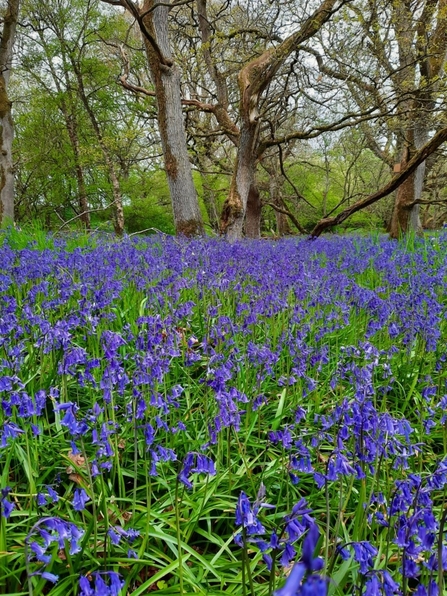The projects will help create, restore and connect places for wildflowers, trees and wildlife, where the environment has been impacted by activities from previous road building. Natural solutions such as wetlands and reedbeds will help filter polluted run-off from roads.
In this region, close to the A69 north of Horsley, work will improve Northumberland Wildlife Trust’s ancient Whittle Woodland, for wildflowers, azure bluebells and starry white wild garlic, by removing introduced conifer species and replanting with broadleaf trees for ancient woodland, such as oak, three ponds will also be restored giving amphibians and dragonflies a helping hand.
Around junction 33 of the M1, habitats and the River Rother will be improved to support much more wildlife, including the now endangered water vole. Rotherham Rivers 3 project sees long-term restoration on the River Rother with natural solutions altering the water flow to provide a variety of habitat and flow types, improving the river for fish and aquatic life. Floodplain work will allow isolated wildlife upstream and downstream to reconnect, and hopefully tempt the reclusive water vole to return.
National Highways, the company responsible for England’s motorways and major A-roads, has awarded nearly £6 million from its Environment and Wellbeing designated fund into the Network for Nature programme.
Overall, twenty-six biodiversity projects will enhance, restore and create more than 1,700 acres (690 hectares) of woodlands, grasslands, peatlands and wetlands across every region of England, with 2 sitting in the North East of England.
In England, the roadside estate is vast and yet is adjacent to some of our most precious habitats. When situated alongside linear infrastructure, such as motorways, habitats can create crucial corridors for pollinating insects, birds and small mammals, enabling wildlife to move through the wider landscape.
National Highways Regional Director for Yorkshire and the North East Simon Boyle said: “At National Highways we are committed to supporting a flourishing network of wildlife and habitats.
“All our schemes take the environment into account and we provide a range of improvements such as bat roosts, mammal tunnels, natural flood management measures, tree planting and effective management of species rich grasslands on our roadside verges. We enhance habitats wherever possible and working with partners like The Wildlife Trusts helps us to recognise what is special so we can ensure our work is really effective.
“We are pleased to be partnering with them so we can best support the environment in Yorkshire and the North East and I’m looking forward to seeing how these particular projects flourish.”
Since 2015 the company has invested around £25 million towards the creation, enhancement and restoration of habitats on or near the motorway and major road network. The combined group of projects within the Network for Nature programme will be one of the biggest contributors towards biodiversity improvements.
Nikki Robinson, Network for Nature Programme Manager for The Wildlife Trusts said: “We’re very pleased that National Highways is committed to Network for Nature, with a strategic approach to restoring nature and joining up vital places for wildlife to help counter the impacts of previous road building.
“Historic road building programmes have contributed to nature’s decline, fragmenting wild spaces and causing environmental pollution, and this programme will help Wildlife Trusts throughout England carry out important nature conservation work, and contribute to a national Nature Recovery Network, connecting town and countryside, and joining up vital places for wildlife, and promoting landscape scale connectivity.”
National Highways’ aim to achieve no net loss to biodiversity by 2025, lead industry peers and the supply chain, and encourage and support communities to connect with wildlife and wild places where they live and work.
Currently in its third year, National Highways’ Designated Funds programme, which was allocated £936m for Roads Period 2 (2020-2025), is divided into four funding streams aimed at making the biggest difference and delivering lasting benefits: environment and wellbeing, users and communities, safety and congestion and innovation and modernisation.
For more information, please visit the webpage.

